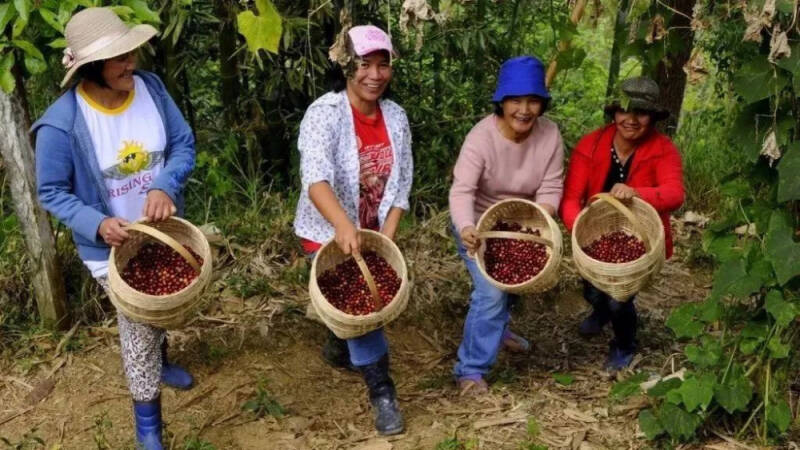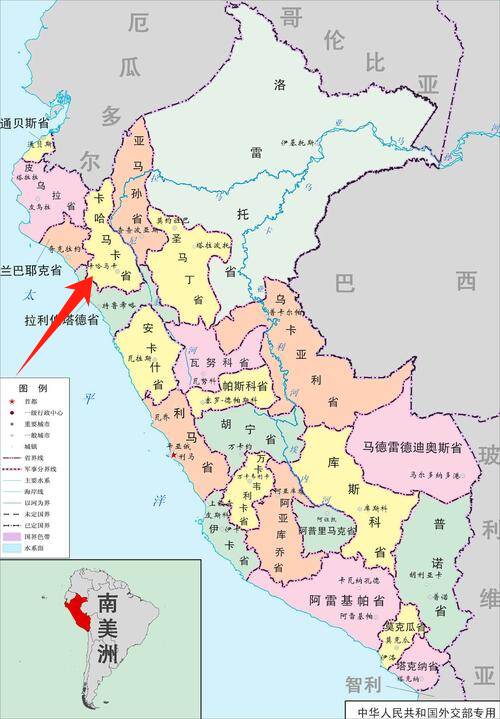Introduction to the Flavor characteristics of Cajamarca Coffee production area in Cajamaca, Peru
Peru is a country in western South America bordering coffee-producing countries such as Ecuador, Brazil and Colombia. Within the territory of the Andes north-south vertical and horizontal, mountains occupy one-third of the country's area. Due to its geographical diversity, Peru has a diverse climate. The western coastal areas belong to desert steppe climate, the eastern part belongs to tropical rain forest climate, and the central part belongs to tropical mountain climate. It rains in summer, and the temperature and humidity decrease with altitude.
Peru's diverse climate creates a unique coffee growing environment, where most of the varieties planted are Caturra, Typica, Bourbon, etc. The coffee produced has chocolate and nutty aromas, medium acidity and smooth taste.

The Cajamarca region is one of Peru's most famous producing areas, located in northern Peru, near the border with Ecuador, high in the Andes Mountains. The area has a diverse landscape, ranging from 1,500 to 2,600 meters above sea level, providing ideal conditions for coffee cultivation.

Coffee cultivation in Cajamarca dates back to the late 19th century, when European settlers introduced the crop to the region, and over time coffee became an important part of the local economy and culture. In Cajamarca, coffee is usually grown by small farmers with 1 - 10 hectares of land. These farmers grow coffee crops using traditional and sustainable farming methods, often intercropped with other plants such as bananas, avocados and maize. This practice helps maintain soil fertility and develops the unique flavor characteristics of coffee beans.
The processing methods used in this region vary from farm to farm, with most coffees treated with water, but some farmers experiment with other processing methods, such as honey treatment and sun treatment, to create unique and complex flavor profiles.
In addition to the classic caramel and cocoa aromas, coffee produced in Cajamarca usually has berry, apple, plum and other flavor characteristics, moderate acidity (slightly higher than coffee in other Peruvian regions), good body and smooth taste.
Disclaimer: Some of the pictures in this article come from the network. Some of the contents of the website, such as pictures, we will respect the copyright of the original work and indicate the source. However, due to the large number, there will be individual pictures and texts that have not been indicated in time. Please forgive me. If the original author has any dispute, he can contact the website to deal with it. Once verified, we will immediately correct it. It will be edited by "Coffee Review vdailycom." Please indicate that this article is intended to spread coffee culture. If infringement occurs, please inform us to delete it. Thank you ~!
Important Notice :
前街咖啡 FrontStreet Coffee has moved to new addredd:
FrontStreet Coffee Address: 315,Donghua East Road,GuangZhou
Tel:020 38364473
- Prev

How many owners have gone to work this year to support their coffee shops?
▲ Click to follow| Daily Boutique Coffee Culture Magazine Coffee Workshop If you are also a member of the large flow of coffee shops, I believe that this year you should have felt that it is not easy to do business in this industry. Let's not talk about getting rich by coffee. Even it is difficult to support yourself with store income. The rest is to use all kinds of zeroes.
- Next

It's gone forever! Nostalgic for the era of Starbucks handwriting Cup
▲ Click to follow | Daily boutique Coffee Culture Magazine Coffee Workshop "Hello, I'm Azure Dragon left and right White Tiger, is my coffee ready?" Friends who often buy coffee at Starbucks must be very familiar with this scene, this is not a joke between friends, but at the Starbucks table to the password scene. Except for this.
Related
- Customers have "changed" Manner's new products! Shop assistant: Please don't mess around!
- Remove sockets in customer areas at Starbucks stores?! Netizen: I won't go if I really tear it down
- What is the difference between the taste steps of sun-dried coffee and washed coffee? Why is sun-cured coffee sweeter and washed coffee sour?
- The recipe for salty grapefruit dirty is revealed! Coffee Festival salty grapefruit dirty coffee making materials parameters ratio milk share!
- How about the flavor of Sunlight 74158 at Sidamo Banshaha Mathieu Processing Factory in Ethiopia? 74158 Share the proportion of coffee brewing parameters!
- What effect does Italian American coffee with filter paper have? Will coffee taste better if it is put on filter paper at the bottom of the powder bowl?
- What is the color difference in coffee beans? What are the characteristics of honey processed coffee beans? Why are the anaerobically treated coffee beans uneven in color?
- How does novice Xiaobai quickly get started and make coffee? Newbies learn to make coffee by hand and share the specific steps and process process!
- Costa tea has a shelf life of 100 years?! Expert: Unable to verify
- It's a huge uproar! American milk addition was rejected by Manner employees?!

